Include a Topper!
-
Happy Birthday Banner
$9.00 -
Gingerbread Cake Topper
$15.00
Add Ons
Your cart is currently empty!
Since 1949 celebrating 75 years. Order online or call us at 1 800 GAMBINO (426-2466)
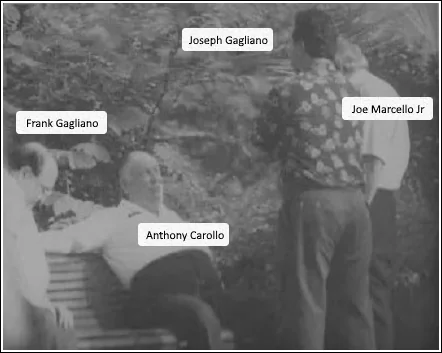
When we left off in Part 1, tensions were rising between two factions of the Italian mob in New Orleans. Police chief David Hennessy was making progress in mediating peace between the sides, but ultimately fell short when, in 1890, he was shot dead.
Non-Italians in the Crescent City were furious. Two hundred and fifty Italians were rounded up for questioning and 19 were charged with murder, including one of the local mafia’s leaders, Joseph “J.P.” Macheca. When all 19 men were found innocent, an angry mob stormed the prison and hung 11 Italians, believed to be the largest mass lynching in history.
We were on the cusp of the 20th century and things were not going well in the Big Easy.
A Modern Mafia
Macheca was among the men who were lynched. But one of his top lieutenants, Charles “Millionaire Charlie” Matranga escaped and became the crime family’s new leader. He pushed the rival Provenzano family out to Florida (something Macheca had been unable to do) and profited from rackets including operations on the docks, prostitution, narcotics trafficking, gambling and—starting in 1920 with the advent of Prohibition—bootlegging.
Matranga retired in 1922, turning over leadership to Sylvestro “Silver Dollar Sam” Carolla. Carolla forced out rival bootlegging gangs over the remainder of the decade, eventually gaining full control of the increasingly profitable business.
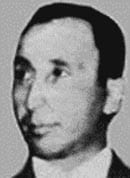
He used this clout to gain political connections—evidenced in 1929 when Al Capone came to town. New Orleans was called “the liquor capital of America” and Carolla supplied mafia families around the country with booze during Prohibition. Capone arrived at New Orleans Union Station to demand that Silver Dollar supply his operation with booze rather than a rival Chicago family.
But New Orleans’ Carolla was not so easily intimidated. He brought several police officers under his control to meet Capone. Then he had those officers break the thumbs of Capone’s bodyguards, flexing the muscle of our local mafia.
In the 1930s, trouble in New York meant opportunity in New Orleans. New York Mayor, Fiorello La Guardia, attacked the slot machine business of New York mobsters such as the “Prime Minister of the Mob” Frank Costello and Phillip “Dandy Phil” Kastel.
Here comes our Carolla. He negotiated a deal with the New York mobsters—as well as with then-Louisiana Senator Huey Long—to bring those slot machines to Louisiana instead. Carolla placed the operation under his lieutenant, Carlos “Little Man” Marcello, who ran profitable illegal gambling operations undisturbed for years.
Marcello’s competent work would pay huge dividends in his rise through the ranks of our local mafia scene.
The Little Man
Legal trouble eventually caught up with Carolla, resulting in his deportation. That began the reign of Marcello, who would grow to become the most powerful mafia boss in New Orleans history.
The “Little Man”—named as such because he was only 5 foot, 6 inches tall—teamed with nationally famous organized crime figure, Meyer “Mob’s Accountant” Lansky, to split profits from New Orleans casinos. Additionally, he forced local businesses to display pinball machines he could skim profits from. Finally, Marcello provided muscle for real estate deals in Florida in exchange for a cut of those proceeds.
His empire was growing, but there are always obstacles. Whereas many of New Orleans’ early Italian mob leaders faced their biggest challenges from other mob families, Marcello faced his from the federal government. As the first half of the 20th century wound down, “Lucky” Luciano organized the United States’ major crime families into a national network. This took place as major newspapers and magazines—as well as local “crime commissions” in major cities—uncovered extensive corruption of the political process by organized crime.
The government was now paying attention.
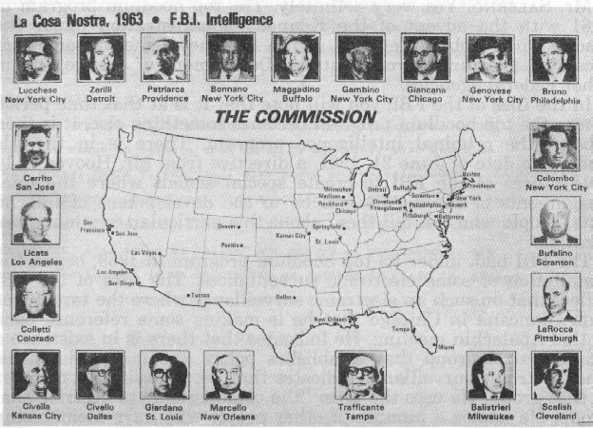
In 1951, the U.S. Senate’s Kefauver Committee, formally and extensively investigated the role of organized crime in the country. Marcello appeared before the committee on Jan. 25, during a session in which senators called Marcello “one of the worst criminals in the country.” He infamously pleaded the Fifth Amendment a whopping 152 times.
The McClellan Committee investigated organized crime once again in 1959. Sen. John F. Kennedy was a member of the committee and his brother, Bobby, was its chief counsel. Marcello once again refused to answer questions, setting off a vicious feud between himself and the Kennedys.
A few years later, now as Attorney General in his brother’s presidential administration, Bobby had Marcello deported to Guatemala. (Truth be told, it was more like Kennedy kidnapped Marcello and literally dropped him to Guatemala. When Guatemala said they didn’t want him, he was dropped off at the border with El Salvador. And when El Salvador said they didn’t want him, he was moved to a mountaintop in the jungles of Honduras. From there, Marcello said he trekked 17 miles through the jungle until he found a small village.) Little Man was almost killed during this journey, but fought his way back to the United States.
Two years later, Bobby had him tried for multiple charges of conspiracy, but Marcello was able to outmaneuver his nemesis once again.
Not to dive too far down the conspiracy rabbithole, but many believe the assassination of President Kennedy was the doing of Marcello, pointing to his connections to, both, Lee Harvey Oswald (Oswald’s uncle was a Lieutenant for Marcello) and Jack Ruby (who owned a strip club in Dallas that worked closely with one of Marcello’s). The House Select Committee on Assassinations reported, “The committee found that Marcello had the motive, means and opportunity to have President John F. Kennedy assassinated, though it was unable to establish direct evidence of Marcello’s complicity.”
Marcello was famous for telling people during this time that “If you cut off a dog’s tail it will continue to bite you, but if you cut off the dog’s head it will cease to cause you trouble.” In the decades that followed, several witnesses provided additional evidence to believe Marcello cut off the Kennedy family’s head. When he did, his nemesis Bobby Kennedy was out of power.
The Mafia Today?
For 30 years, Marcello successfully ran the New Orleans Mafia, often hosting meetings at Mosca’s in nearby Avondale, a delicious old-school Italian restaurant inside a building he happened to own. (Marcello’s family still owns the building to this day.)
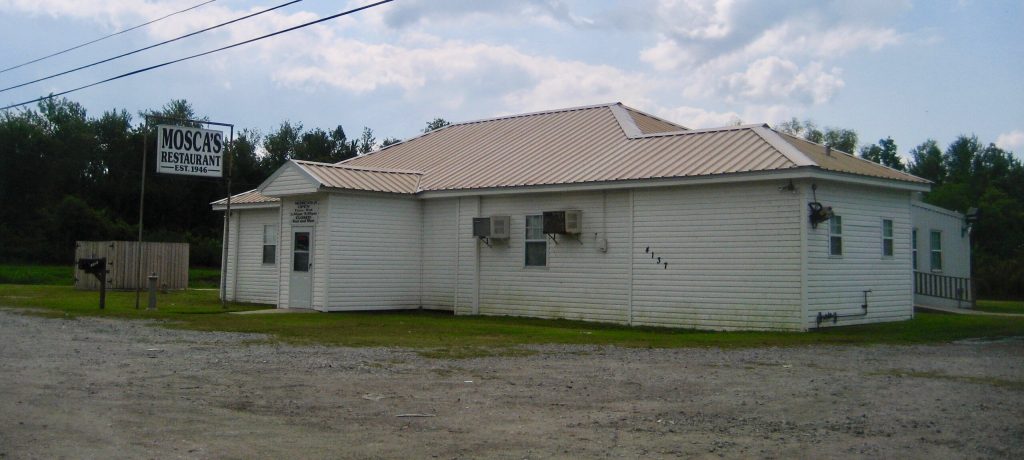
In 1982, Marcello was convicted of several crimes involving corruption, labor racketeering, bribing a federal judge, and accepting kickbacks in exchange for large state insurance contracts. He was in jail until 1989, when he suffered a series of strokes. He announced his retirement and died on March 2, 1993, in his Metairie home.
The deathblow to the New Orleans Mafia appeared to be dealt in 1995 and 1996, when the new boss, Anthony Carolla (son of “Silver Dollar”), as well as underboss, Francis “Muffaletta Frank” Gagliano, were sentenced to several years in prison for attempting to skim from the burgeoning video poker industry. Gagliano’s son, Joseph, was given 2 ½ years for a scheme to defraud the President Casino in Biloxi by marking blackjack cards with invisible ink.
How’d the FBI discover these plans?
Easy. They wiretapped Frank’s Deli (named after “Muffaletta Frank” and known today as Frank’s Restaurant) in the French Quarter beginning in 1993. The sting was known as “Operation Hardcrust”—supposedly because of the stale bread undercover agents were forced to eat while at Frank’s. (Ouch.)
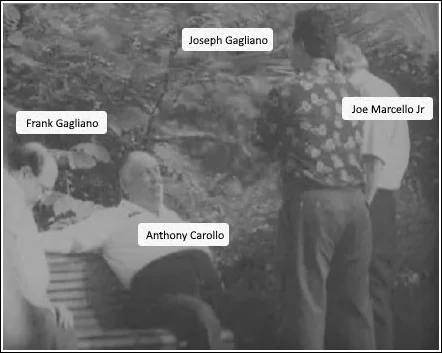
The public didn’t hear much from the city’s mafia after that. Then, on May 7, 2015, two Metairie men were pulled over in response to a tip. When the police checked the vehicle, they found it was a stolen van outfitted with makeshift gun ports, a sniper rifle with a silencer, and 80 feet of cannon fuse. The driver was Dominick Gullo, known for staging poker tournaments around the country, and the passenger was Joseph Gagliano—the previously incarcerated son of former underboss, “Muffaletta Frank.”
The two men claimed they had just purchased the van a few hours prior and were not aware of what was in the back. Later, they said they had outfitted the van to sell snoballs.
I’m no detective. It’s totally possible they were about to sell snoballs out of the back of a van with a sniper rifle and cannon fuse.
Or…maybe… just maybe… they were up to something else—evidence that a crime family born more than a century and a half ago isn’t gone just yet.